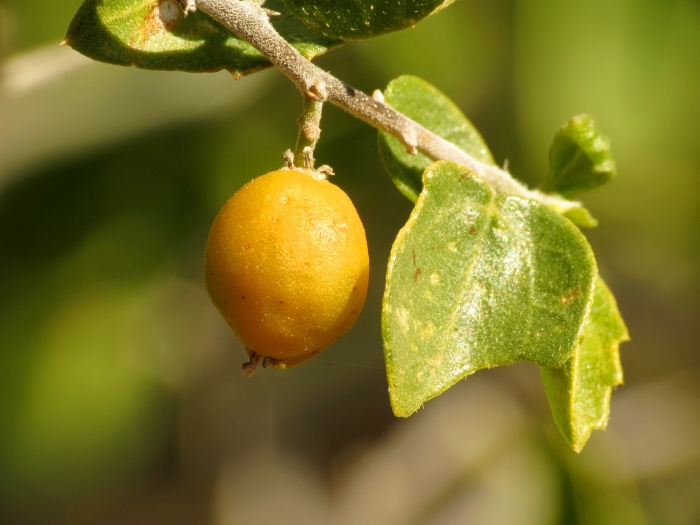Desert Hackberry
(Celtis ehrenbergiana)
Desert Hackberry (Celtis ehrenbergiana)
/
/

Katja Schulz
CC BY 2.0




















































Estimated Native Range
Summary
Desert Hackberry is valued for its drought tolerance and ability to thrive in challenging environments, making it suitable for xeriscaping and as a wildlife-friendly plant. It is often used in naturalistic plantings, as a windbreak, or for erosion control. This species is well-adapted to full sun or part shade and requires minimal water once established, preferring soils with fast or medium drainage. While generally low-maintenance, it can be susceptible to pests like scales and whiteflies. Its thorny branches may also require careful placement to avoid injury to passersby.CC BY-SA 4.0
Plant Description
- Plant Type: Tree
- Height: 8-10 feet
- Width: 8-10 feet
- Growth Rate: Slow
- Flower Color: N/A
- Flowering Season: Spring, Winter
- Leaf Retention: Evergreen
Growth Requirements
- Sun: Full Sun, Part Shade
- Water: Low
- Drainage: Fast, Medium
Common Uses
Bee Garden, Bird Garden, Butterfly Garden, Deer Resistant, Drought Tolerant, Edible*Disclaimer: Easyscape's listed plant edibility is for informational use. Always verify the safety and proper identification of any plant before consumption., Erosion Control, Fire Resistant, Hummingbird Garden, Low Maintenance
Natural Habitat
Arid regions such as desert scrub, thorn forests, and dry woodlands
Other Names
Common Names: Spiny Hackberry
Scientific Names: Celtis pallida , Celtis ehrenbergiana , Celtis tala , Celtis sellowiana , Celtis spinosa var. pallida , Celtis lancifolia , Celtis pallida subsp. pallida , Celtis pallida var. pallida , Celtis spinosa var. weddelliana , Celtis pallida var. discolor
GBIF Accepted Name: Celtis ehrenbergiana (Klotzsch) Liebm.